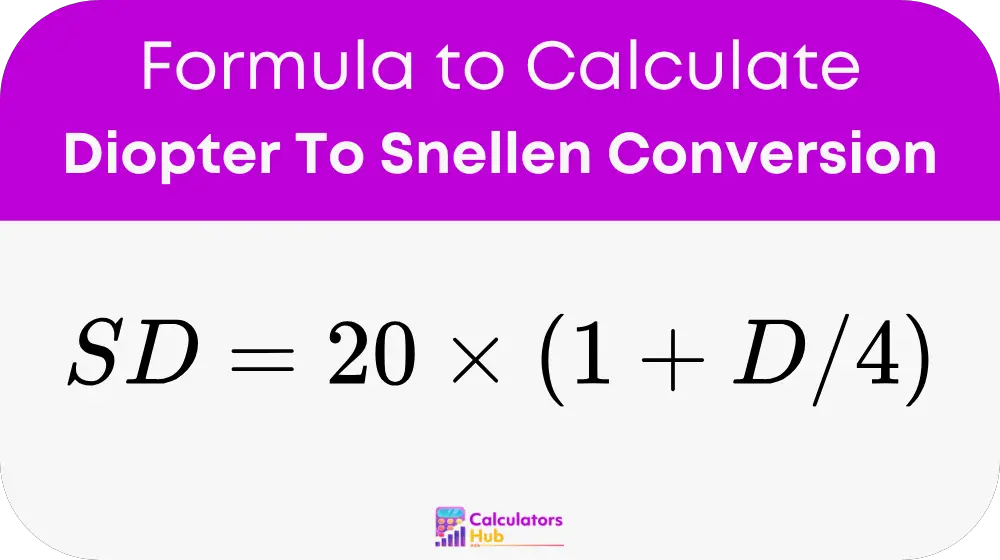A Diopter to Snellen Conversion Calculator helps convert a person’s refractive error (measured in diopters) into a Snellen fraction, which is commonly used in eye exams to express visual acuity.
Diopters measure the focusing power of corrective lenses needed to compensate for refractive errors like nearsightedness (myopia) or farsightedness (hyperopia). The Snellen chart, on the other hand, represents vision clarity at a standard distance (usually 20 feet). This calculator bridges the gap between these two measurements, making it easier for individuals and eye care professionals to understand visual acuity in a familiar format.
Formula of Diopter To Snellen Conversion Calculator
The conversion from diopters (D) to Snellen notation is estimated using the formula:

Where:
- D = diopter value of refractive error (negative for myopia, positive for hyperopia)
- Snellen denominator = the second number in Snellen notation (20/x)
For example:
- A -1.00 D refractive error results in approximately 20/50 vision.
- A -2.00 D refractive error results in approximately 20/100 vision.
This formula provides an approximate conversion, as actual visual acuity can vary based on individual factors like contrast sensitivity and eye health.
Diopter to Snellen Conversion Table
This table provides a quick reference for common refractive error values and their estimated Snellen visual acuity.
| Diopters (D) | Approximate Snellen Equivalent |
|---|---|
| -0.25 D | 20/25 |
| -0.50 D | 20/30 |
| -0.75 D | 20/40 |
| -1.00 D | 20/50 |
| -1.50 D | 20/70 |
| -2.00 D | 20/100 |
| -3.00 D | 20/200 |
| -4.00 D | 20/400 |
| -5.00 D | 20/600 |
| -6.00 D | 20/800 |
This table helps individuals quickly determine their estimated Snellen fraction based on their prescription.
Example of Diopter To Snellen Conversion Calculator
A person has a refractive error of -2.50 D and wants to find their Snellen equivalent.
Using the formula:
Snellen denominator = 20 × (1 + (-2.50)/4)
= 20 × (1 – 0.625)
= 20 × 0.375 = 20/80
This means the person’s unaided vision is approximately 20/80, meaning they need to be 20 feet away to see what a person with normal vision can see at 80 feet.
Most Common FAQs
This calculator provides an approximation. Actual visual acuity can be influenced by factors like astigmatism, pupil size, and lighting conditions.
A higher absolute diopter value indicates greater refractive error, meaning the eyes need stronger lenses to focus light properly on the retina.
Yes, but it is mainly used for myopia (negative diopters). Hyperopia (positive diopters) affects vision differently, and Snellen values may not always align perfectly.